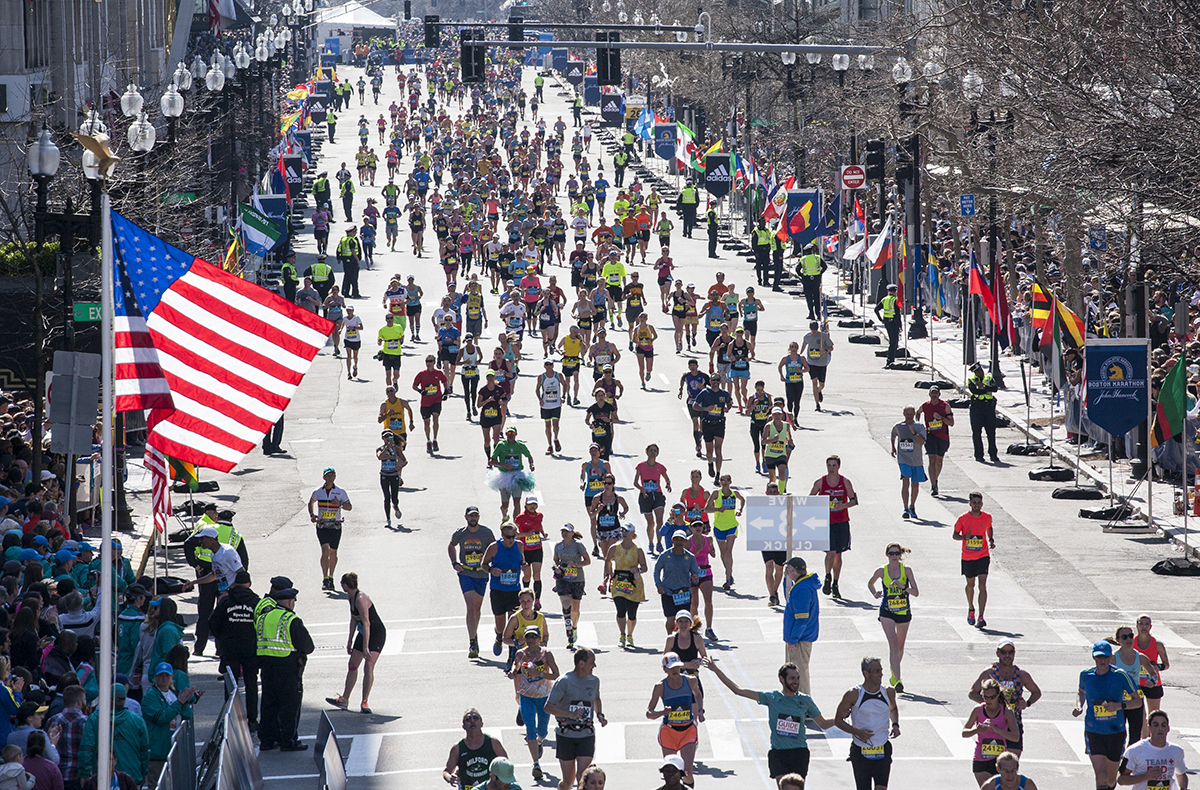Ask the Expert: What Does a Marathon Actually Do to My Body?

Boston Marathon photo by Olga Khvan
When you think of distance running, you probably think of the good stuff: the runner’s high, aerobic exercise, and major calorie burning. But running 26.2 miles—or any long distance—can also be very hard on your body. You’ve likely heard the horror stories about over hydration, but what about nipple chafing (yes, it’s real), kidney injuries, and lost toenails?
As we head into Patriot’s Day weekend, we asked Garth Savidge, the outpatient rehab manager at Newton-Wellesley Hospital, what a marathon actually does to your body.
Ask the Expert: What happens to my body when I run a marathon?
Answer: Your body is taking a beating, so expect to be sore. And if you aren’t careful, you could end up with tendonitis or a stress fracture.
The details:
First thing’s first: You’re going to be sore, especially if you didn’t train adequately.
“Muscular-wise, you’re basically doing repetitive contractions,” Savidge explains. “You’ve got your body weight that’s repeatedly hitting the ground, and your body is having to absorb all that shock. That’s all force that gets translated into the muscles and the bones and your body.”
Doing some cross-training, such a biking or walking, in the days following the race will help loosen up your muscles and joints, Savidge says. Post-race recovery is also an excellent excuse for a massage.
Your oxygen demands, blood pressure, and heart rate all increase during a marathon, too. That’s a lot for your body to handle, which is why it’s so important that runners train.
“As you train, you’re not only conditioning your muscles and your tendons to adapt to that increased repetitive stress, but also your heart and your cardiovascular system are becoming more efficient at managing the oxygen consumption and delivering oxygen to all the muscles during running,” Savidge says.
He adds that those who go too hard during the race put themselves at risk of plantar fasciitis, which is an over stretching of the connective tissue on the bottom of the foot; tendonitis, which is irritation or inflammation of a tendon, in the knee or ankle; or patellofemoral pain syndrome, a.k.a. runner’s knee, which causes pain in the kneecap.
The biggest red flags, he says, are sharp, isolated pain, or persistent pain, the latter of which could be indicative of a possible stress fracture, when repeated pulling and traction on a tendon can create micro-fractures in a bone. But the average runner shouldn’t worry about stress fractures, Savidge says, because they usually affect those who have poor bone health.
All of that said, these possibilities are just that—possibilities. Aside from blisters and sore muscles, Savidge says you’ll likely be fine as long as you’re eating right, stretching after workouts, staying hydrated, and wearing the right footwear.
“More [people] run without problems than do, so this is sort of the spectrum of what can happen,” Savidge says. “It’s not that this happens with every person every time.”


